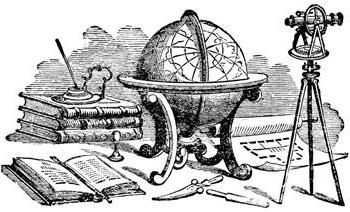The processes taking place in modern society require a dynamic and stable legal regulation, the effectiveness of which depends on the sequence of their implementation, forms and methods, processes of functioning of bodies (state and local self-government). Of particular importance in this case is administrative law. That it is the main tool for regulating relations in society in the field of public administration.
Place of administrative law in the system of law

Public law is essentially a combination of industries that are, to varying degrees, related to the organization mechanism and the processes of functioning of the state and its bodies. In addition to administrative law, this complex includes constitutional, criminal, civil, financial, tax, procedural, international public, as well as judicial system. Each of the industries has its own subject, a set of methods and the structure of regulatory material that together make up its system. The right may be public and private. In the first case, it protects and protects the common state interests, and in the second case, of individuals.
The administrative law system is often called managerial. Its mechanism of influence plays a special role. It acts as a tool that governs social processes in our society. Along with it, this system includes management policy, the doctrine of management, etc. Speaking about the subject of this branch of law, it is necessary to give its simplest and most correct definition for a better perception. Administrative law is authorized to regulate public relations in the field of public (state) administration. That is, it establishes the order of interaction between the state and citizens who fell into the scope of its “attention” in the implementation of administrative activities.
Subject: structure and content

First of all, it is worth saying that the subject and the system of administrative law are interconnected as part and whole. As already mentioned above about the first concept, these are relations in society, which are formed in the field of public administration, carried out by specialized authorities (executive), as well as officials. The branch of administrative law, in turn, is a combination of harmonious legal norms that are designed to:
- To regulate relations in the field of organization and actions of state and local self-government, actions of executive authorities.
- Determine the order of actions and managerial procedures. For example, the preparation of an administrative protocol or agreement, etc.
- Create guarantees of legal protection not only for individuals, but also for legal entities in court from unlawful actions (or inaction) of state authorities, officials, municipal employees through administrative proceedings.
- To ensure public safety and order, establish various kinds of administrative and legal regimes.
- The system of administrative law of the Russian Federation, like any other, should determine the types of administrative coercion for “negative”, ineffective management results, inadequate fulfillment of one's official duties, commission of offenses, etc.
- Ensure freedoms and rights, legitimate interests of legal entities and ordinary citizens.
Legal industry methodology
To implement the regulatory function, administrative law uses a number of means (methods) of influence. They are usually called methods. The concept is very capacious and consisting of many components. To put it succinctly, it is a set of procedures, methods, techniques and mechanisms for the impact of legal rules and legal norms on certain social relations.
It should be noted that the system of the administrative law industry uses all three methods (methods) of legal regulation: mainly authorization (with the help of authorizing norms), injunction and prohibition (they are most often used, and therefore known).
There is another classification. The theory of law distinguishes two fundamental methods of regulation, characteristic of two large blocks of legal branches: public and private.
Imperative method

This method and the system of administrative law are as much as possible interconnected. This method of legal regulation is carried out by means of power regulations. They are characteristic primarily of administrative law. The method is characterized by imperative-imperative principles, relations of subordination (subordination), establishment of a certain legal status for a subject of law. For example, law enforcement or military service. They include a large number of peremptory legal characteristics that determine their functioning, job design. The relations between employees in these services are based on direct subordination, centralization of management and manageriality.
Dispositive method

His system of administrative law uses the least. Dispositive method It implies equality between participants in legal relations and freedom of expression of their will. The legal fact in this case is most often an agreement in which its parties independently determine their duties and rights, as well as liability for violation of its clauses. Within certain limits, it can be used in the system of administrative law. However, it is more typical for private sectors (labor, family, civil).
The concept and system of administrative law
The industry under consideration is an integral integral part of the legal system of Russia, while it has its own, original structure, characterized by the interconnection of its sub-sectors, institutions and norms. It should be understood that there are two different systems: administrative law and legislation. Both of them are closely interconnected and inextricable. Their joint improvement further defines and determines the development of the regulatory mechanism (administrative and legal). Over the years, many scientists have proposed approximately the same admin system. rights, which includes two parts: general and special.
Characteristic of the common part

The main institutes of the industry are subject to consideration in it. The administrative law system in the general part contains such structural elements as the concept, subject, system and methods of the industry, subjects, legal acts, offenses and liability, etc. Based on all this, it is advisable to identify four main components.
- Institutions and legal norms regulating relations in the field of activity of the power (executive), as well as in the system of state administration.
- The rules of law governing and regulating the management process.
- Legal norms that regulate the procedure for protecting in court the freedoms and rights of citizens from decisions and actions of public administration (legal proceedings in accordance with the Code of Administrative Offenses).
- Norms and institutions of administrative-tort law governing measures and types of coercion, system of application; identify officials and bodies with the right to consider cases relating to administrative offenses.
Feature Part Feature
From the point of view of structural construction, it includes chapters on the state management system in the three most important areas: socio-cultural, economic, administrative and political. Thus, the special part examines regulatory issues in detail. Namely: public administration and the relationship between the competence of the Russian Federation and individual entities in this area, intersectoral management and its forms of organization, the relationship with government regulation, etc.
The modern system of administrative law provides for its division into substantive and procedural. In the first case, it establishes the main provisions, determines the status of subjects, their rights and obligations, restrictions and prohibitions, responsibility. Procedural law dictates the procedure for the implementation of material norms.
About sources of administrative law

The sources of administrative law are its specific external forms of expression. Simply put, these are normative legal acts that contain certain norms designed to regulate specific social relations. They can begin to exist only as a result of the appearance of the source. The rules of law are contained in numerous laws and regulations in force on the territory of the Russian Federation. At the present stage, the system of sources of administrative law is significantly complicated. The reason for this is legislative acts adopted at the level of constituent entities of the Russian Federation and operating only within them, but not contradicting general principles and standards.
Types of sources
Legal sources of not only administrative, but also many other industries are usually divided into federal and regional. In addition, the Constitution of the Russian Federation in Article 15 determines that principles and norms generally recognized in the field of international law, as well as international treaties of Russia, are also an integral part of its legal structure. They do not stand above or below federal sources, but rather appear at the same level. However, if the international treaty ratified by the Russian Federation contains other rules or regulations than in domestic law, then it is necessary to apply them.
The federal sources of administrative law include (by hierarchical ladder):
- The Constitution of the Russian Federation is the main document of the country.
- Federal constitutional laws (have a complicated adoption procedure).
- Federal laws.
- Decisions of the State Duma and the Federation Council.
- Decrees of the president of the country.
- Government Decisions.
- Legal acts that establish the status of ministries, services and agencies at the federal level.
- Normative acts of federal authorities (executive) and ministries.
Administrative Law Functions

Having determined what place administrative law occupies in the legal system, it is necessary to say about the functions that it is called upon to perform. The meaning of this concept lies in the main areas of sectoral legal impact in general on public relations. Traditionally, it is customary to distinguish two main functions: regulatory and protective. The first is expressed in the impact through the establishment of duties and rights, restrictions, prohibitions, competencies and powers of subjects of administrative law on public relations. Its potential is maximally realized through organizational, executive, licensing, rule-making and control and supervision activities.
The essence of the protective function lies in the incentive effect of administrative law to comply with the norms established by the state in this area. In this case, coercive measures, restorative sanctions, principles of legal liability are used.
